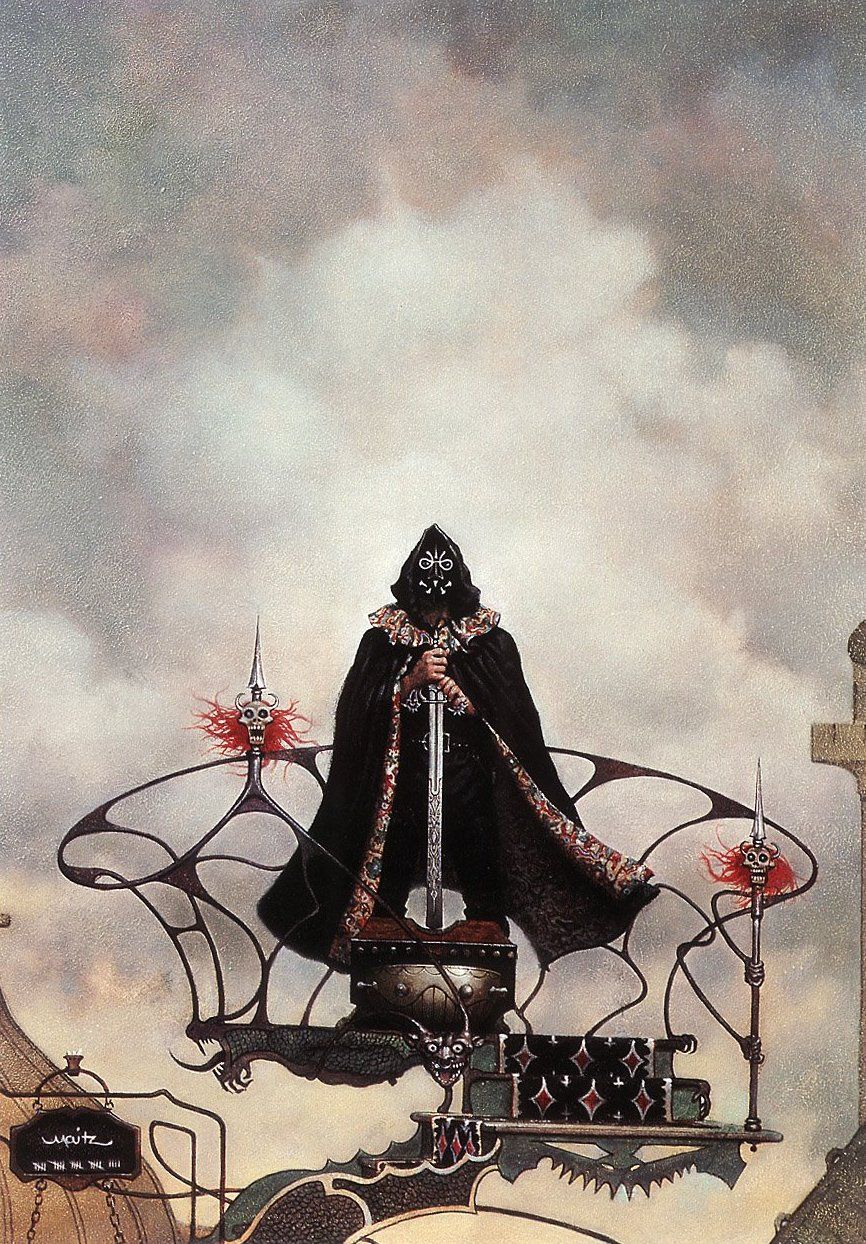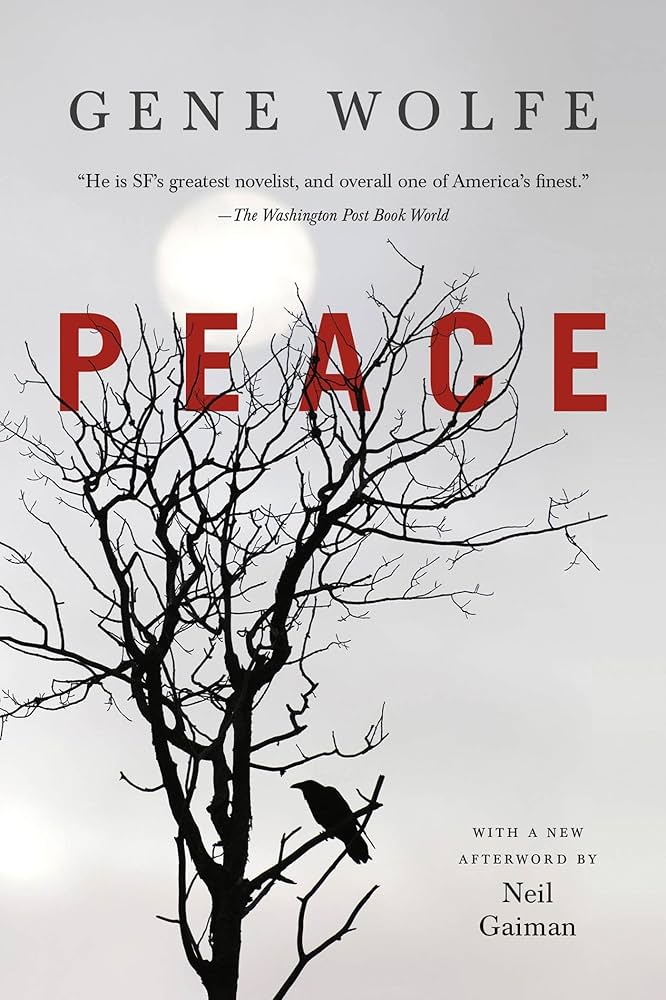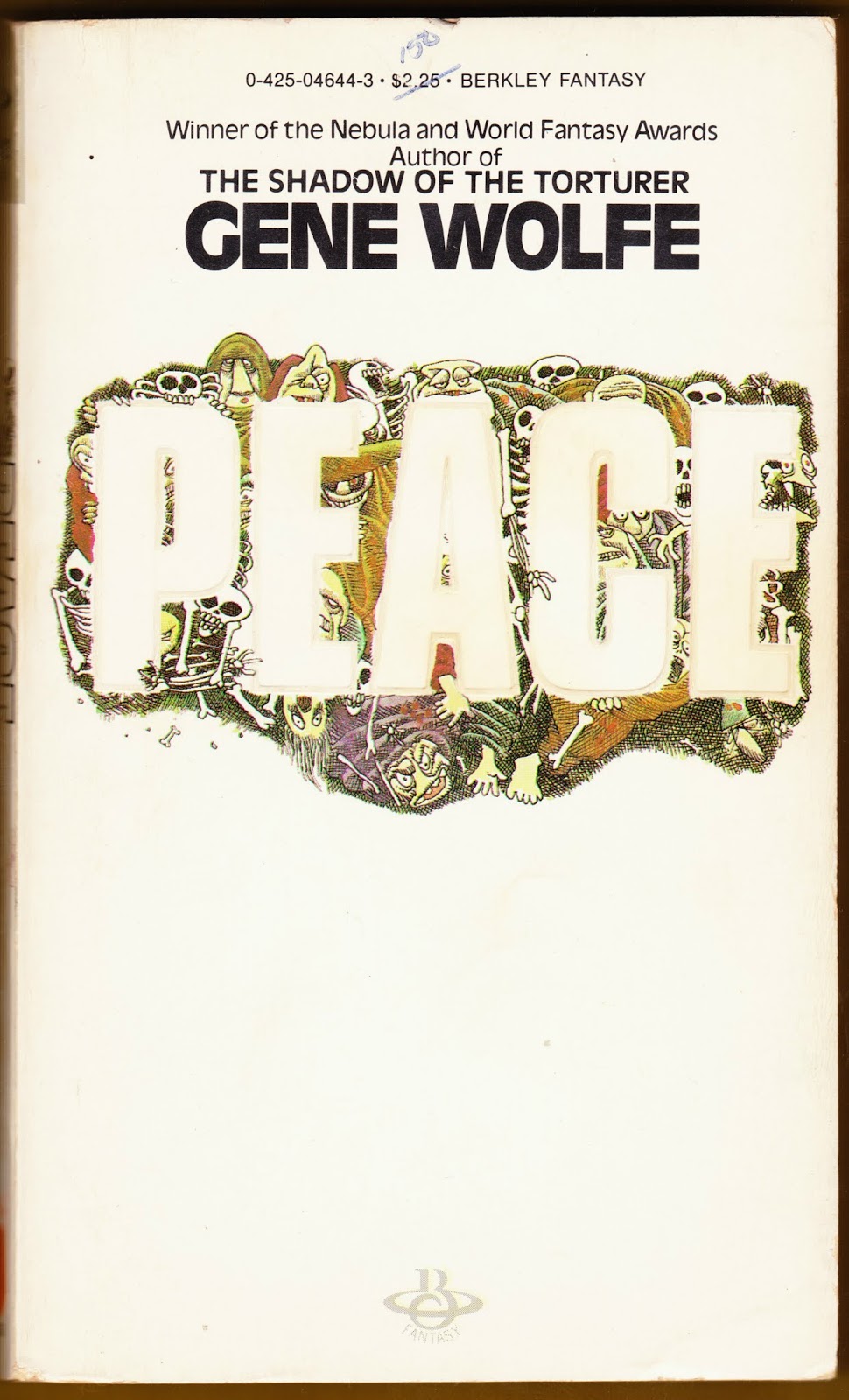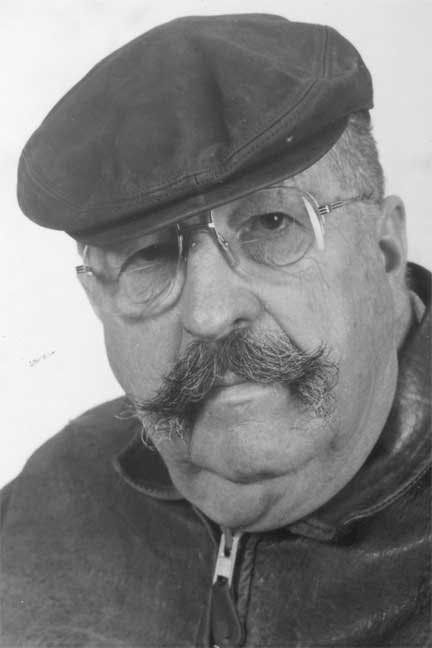Peace by Gene Wolfe: A Review+
My first introduction to Gene Wolfe was through what is widely considered his magnum opus, The Book of the New Sun. It’s a Science Fantasy work of dense prose filled with detail that actively obscures simple facts, leaving the reader to puzzle out astounding truths hidden between the lines. This approach to storytelling confounded me as a teen, leaving me with the feeling of having bounced off the side of some mostly opaque wall of ice but having glimpsed something strange, beautiful, and terrible only faintly visible within. Upon reading the work a second time I was shocked to discover at one point the protagonist has a fight through a gothic castle while a giant brute of a man tries to smash him with an electric mace, caving holes in walls etc - how could I not have seen this for the thrilling adventure story it was at the time? Unclear. Teenagers aren’t always big on picking up hidden things, or even things that are right there in front of them.

You can see why this thing took off - who WOULDN'T read through a dense labyrinth of prose multiple times to fully unpack what THIS guy's deal is? I sure did.
I say all that even though this isn’t a review of The Book of the New Sun because I want to give a sense of what Gene Wolfe represents both to me and maybe to a wider reading audience. He’s both a literary voice in a genre space and someone who wants to force the reader to really engage with the text to figure out what the hell is going on. On top of that, in my opinion, he’s happy to have you wrestle with something that intentionally doesn’t come all the way together, leaving you trying to piece together your own answers from the scraps. To be clear – that rocks, and is maybe one of the best versions of what speculative fiction (fiction in general? Art?) can be.
This is a review of Gene Wolfe’s Peace, his 1975 novel about an elderly midwestern man drifting in and out of his memories from an unclear point in the future. It’s a novel of stories within stories; a technique Gene loves to employ (it’s a common occurrence in Book of the New Sun). Here it’s doubly effective, as the main narrative which the sub-stories would be interrupting is actually a flood of memories in only vaguely chronological order. The narrator jumps between them in a free association fashion, so digressions into other people’s stories don’t feel out of place. The walls between the story the narrator is telling us of his life, the stories he recalls other people telling him in his childhood, and the stories that people within those stories are all quite thin. Instead of being layers of nesting dolls they act like phases of a tunnel, or maybe a narrative digestive tract; in the end they spit us out back on the original path, although maybe not at the same point, or in the same condition.

The cover of MY copy of Peace - it's fine.
Peace indulges in something I consider to be a Gene Wolfe trademark: a narrator who spends most of his time sketching detailed tapestries of periods when nothing of much significance seems to be occurring, and then dropping a single line referencing an event that seems to be much more significant than anything else in the entire story. Did our narrator accidentally kill a fellow child in his youth? What happened to his young lover who pulled a gun on him? That these questions can remain hazy in the mind despite a complete read of the book is the Gene Wolfe magic in action. Perhaps repeat readers can report that there are definitive answers to these questions - perhaps they’re open ended, perhaps somewhere in between - that doesn’t really concern me! What stands out is that a book where a man recollects the story of his life is eager to let these details almost slip by entirely, but not quite. The narrator is only willing to catch a glimpse of these memories out of the corner of his eye before turning away. He absentmindedly reveals details of events he’s omitted from the larger narrative while telling an unrelated story. Does he hide or avoid dwelling on these moments out of shame? Guilt? We can only speculate.

The cover of a vintage copy of Peace - NOW we're talking!
One thing that dominates throughout the book is a sense of history. Much of the book is spent on the narrator’s childhood, which given that he was an older man in the 1960’s, occurred in the late 19th and early 20th century. It’s worth noting that this was a time as accessible to living memory in the 60’s and 70’s when Wolfe wrote and published the book as the 1960’s are to us today. Wolfe captures this period, the feeling of being in a specific time and place beautifully, and reminds us of the strange experience of that generation that lived through the rapid technological transformation that defined the first half of the 20th century. Additionally, we’re reminded by the end of the book that long life is a kind of time travel, a kind of magic. As an example, I give a moment towards the end of the book when the narrator is able to determine an antique journal dated to the era of the midwestern town’s founding is a forgery. Though the journal is from many decades before he was born, it mentions a young girl who went on to be the narrator’s cook when she was an old woman, and he was a child. This allows him to identify some inconsistencies that out the book as a fake. To the forger these people were history, long dead and gone, but the chain of living memory is often longer than we think.
Interestingly this is also a book where Gene himself shines through. The final chapters reveal that the narrator spent much of his adult life as the president of a company that manufactures an Orange flavoured beverage, which turns out to be made from potatoes. Gene’s background as an industrial engineer working in the field of food processing seems relevant. There’s something at the heart of speculative fiction here, a connection Gene is drawing between the otherworldly fictions of genre and those at the heart of 20th century industrial production - food additives, industrial processing of cheap raw materials into a product with the appearance of more expensive origins. Gene himself helped design one machine in the long chain of machines that compacted and extruded pulped potato, cut and cooked and flavoured it, eventually producing a Pringle. This is a product labelled as a “potato snack”, because it legally doesn't qualify as a “chip”. Talk about alchemy! Talk about Science Fiction! This whole section feels just as science fiction-y as the far future weirdness of book of the new sun! In a world where this stuff was decades old and not a century, industrial food processing WAS science fiction, WAS magic, but in real life. Speculative fiction authors are just selling you words repackaged and processed to make you feel like you’re far away - but you haven’t moved, and the words in the book are the same words that go into one of Gene’s issues of Plant Dynamics (the industrial engineering trade magazine he was editor of for many years prior to his emergence as a published author). The only difference is how you arrange the words.

Rest in Peace big man - we're all still trying to catch up.
Gene Wolfe’s Peace is hereby inducted into The Hinterlands Canon* – Oct 5, 2025
*what does this mean? Check out Issue #1 of The Hinterlands Zine to find out! Coming soon, watch this space – also keep an eye out for The Hinterlands Canon page, coming soon to this very blog – keep an eye on the masthead for new tabs like that one, coming soon! Also maybe I’ll implement comments! [note from Editor Alex: we got comments baby see below hell yeah] You better keep coming back every day just in case! Read my blog!!!!!
Links to blogs! This is a new thing I’m doing where I collect blog posts I like and share them with you when I get around to it. These are all a few weeks old but maybe they’ll be new to you. This week they're all TTRPG related - if that's not relevant to you, sorry! But maybe check 'em out anyway - you never know what might speak to you.
Building Bastionland: Chris McDowall of Bastionland outlines his career in game design, with an emphasis on the long and winding road of amateur and semi-professional work required to have a viable career as a pro. Super interesting and valuable!
100 Ways to Improve your GMing: Nate Whittington of Grinning Rat compiles a list of tips for better GMing, compiled from dozens of blog posts over five years - a great resource to reference.
The Star Pattern Part 1
and Part 2: a two part article from Ben Robbins at Ars Ludi covering a common pitfall at gaming tables: players who talk to the GM, but not each other. The articles explain the problem and how to improve the situation, both as a GM and as a player.